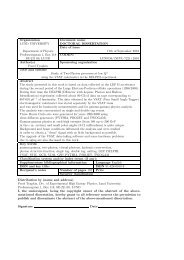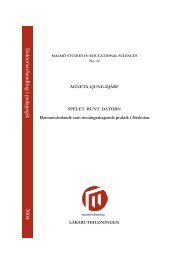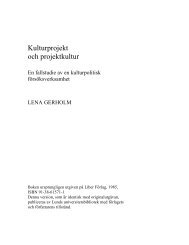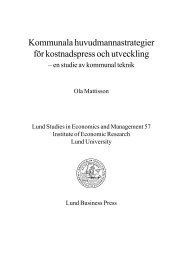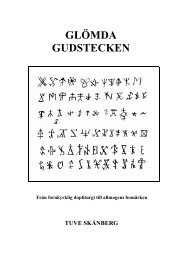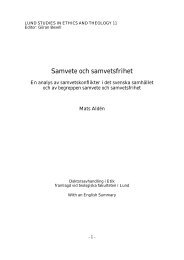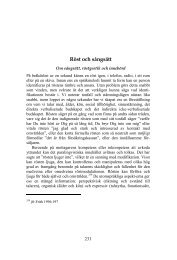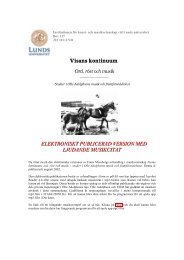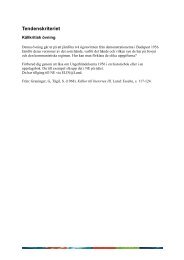Hyperpolarized Nuclei for NMR Imaging and Spectroscopy - Lunds ...
Hyperpolarized Nuclei for NMR Imaging and Spectroscopy - Lunds ...
Hyperpolarized Nuclei for NMR Imaging and Spectroscopy - Lunds ...
Create successful ePaper yourself
Turn your PDF publications into a flip-book with our unique Google optimized e-Paper software.
The hyperpolarization techniques increase the nuclear polarization by 5 to<br />
6 orders of magnitude as compared with the thermal polarization, with a<br />
corresponding rise in signal. Owing to the increased polarization, MRI can<br />
be extended to nuclei other than 1 H, thereby permitting the visualization of,<br />
e.g., metabolic processes, which were previously inaccessible. However, the<br />
signal increase is counteracted by the much lower concentration of the hyperpolarized<br />
nuclei — 10 3 to 10 6 times lower than the 1 H concentration,<br />
depending on the specific application. There<strong>for</strong>e, each application involving<br />
hyperpolarized nuclei needs to be evaluated with respect to the anticipated<br />
SNR level.<br />
The density of protons ( 1 H) is fairly homogeneous within the body <strong>and</strong><br />
provides little clinically useful in<strong>for</strong>mation. The ability of conventional MRI<br />
to differentiate between various soft tissues <strong>and</strong> detect pathology is based instead<br />
on the inherently different relaxation times (T1, T2, <strong>and</strong> T2*) of different<br />
tissues. Even so, the achievable dynamic range is below 10 (Albert <strong>and</strong><br />
Balamore 1998). With the administration of contrast agents containing paramagnetic<br />
atoms (e.g., Gd 3+ , Mn 2+ ), the relaxation rates (1 T 1 , 1 T 2 ) will<br />
increase proportionally with the concentration of the agent. Depending on<br />
the imaging sequence used, the reduced relaxation time can result in either<br />
an increased or a decreased signal where the agent accumulates, thereby increasing<br />
the image contrast. For a detailed description of MR contrast<br />
agents, see, e.g., Merbach <strong>and</strong> Tóth 2001.<br />
The mechanism is fundamentally different <strong>for</strong> hyperpolarized agents: the<br />
hyperpolarized nuclei generate the signal themselves rather than moderating<br />
the signal from adjacent protons. A better designation <strong>for</strong> these agents would<br />
there<strong>for</strong>e be “imaging agent” rather than “contrast agent.” Consequently,<br />
hyperpolarized MRI (or MRS) has the advantage of completely lacking<br />
background signal, either because the nuclei are not naturally present in the<br />
body (noble gases) or because the natural abundance signal is negligible<br />
( 13 C).<br />
The signal evolution of hyperpolarized nuclei differs from that of thermally<br />
polarized nuclei: once the hyperpolarization has vanished, either by T 1<br />
relaxation or by radiofrequency-(RF) induced depolarization, the enhanced<br />
signal cannot be regained. This calls <strong>for</strong> rapid per<strong>for</strong>mance of the experiments<br />
<strong>and</strong> a careful design of the imaging sequences. Sequences traditionally<br />
used in MRI may per<strong>for</strong>m suboptimally — or may even be useless — <strong>and</strong><br />
new strategies will be necessary (Zhao <strong>and</strong> Albert 1998, Dur<strong>and</strong> et al. 2002,<br />
Wild et al. 2002a).<br />
2



